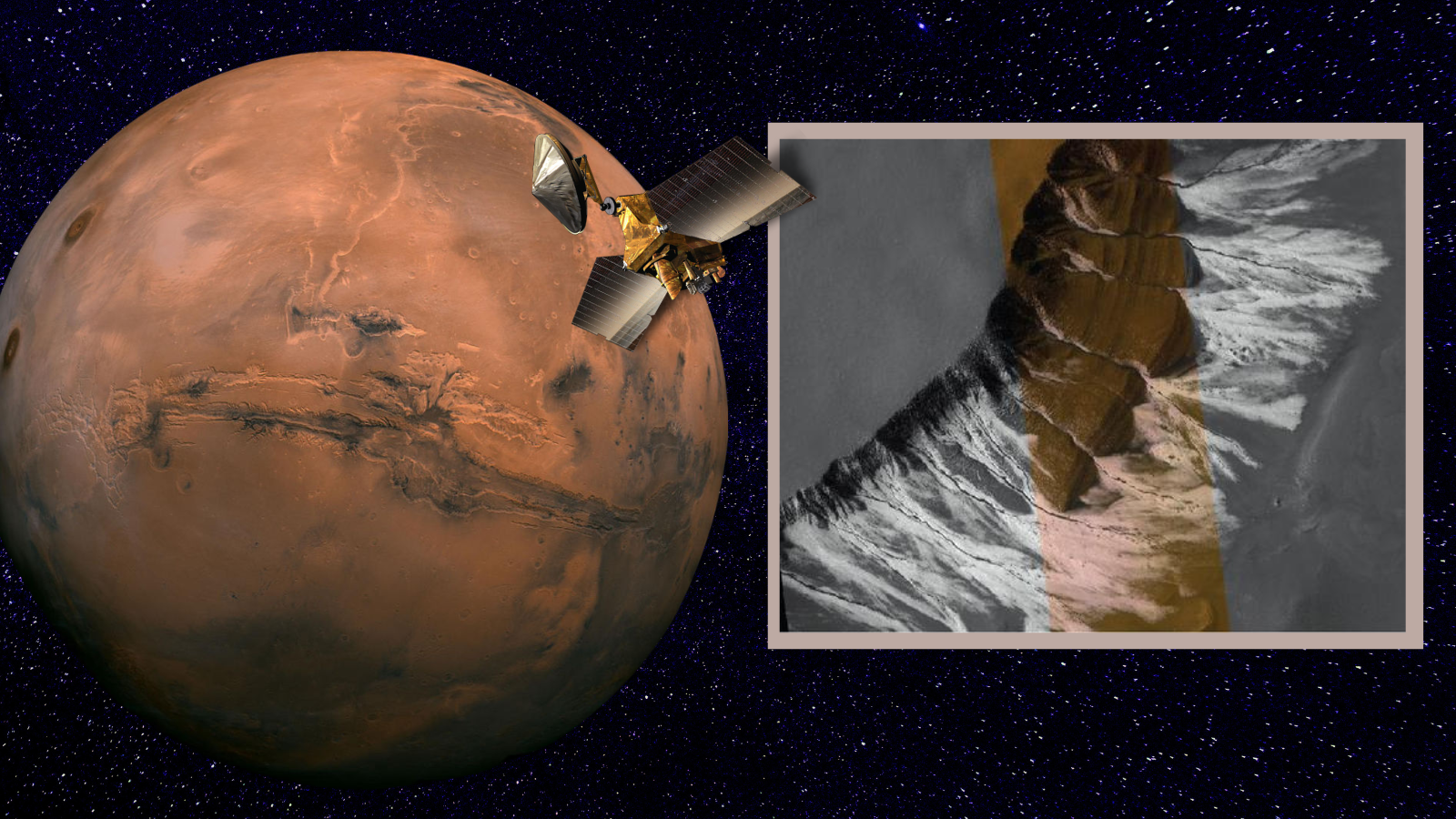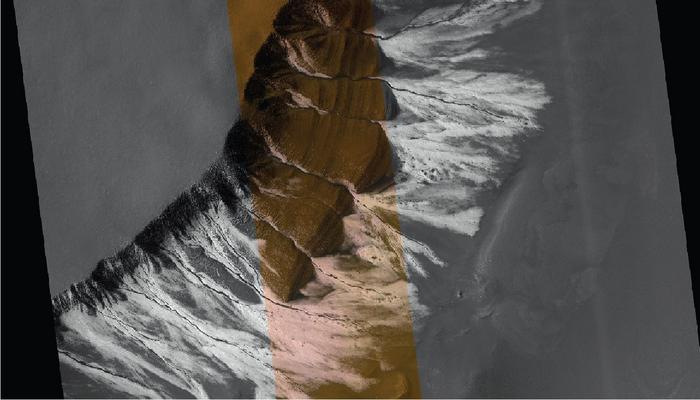Bad news for life on Mars? Red Planet's wet epoch may have been shorter than we thought
"The results of my research suggest that the chance of life having existed on Mars is smaller than previously thought."

Mars may be dry and barren today, but multiple lines of evidence show that water flowed across the Red Planet billions of years ago.
Now, new research has suggested that this water may have existed at the surface of Mars for less time than previously thought. That's because gullies observed on Mars by spacecraft like NASA's Mars Reconnaissance Orbiter (MRO), which had previously been thought to have been carved out by the flow of water, could have instead been created by explosively evaporating carbon dioxide ice.
Because liquid water is considered a vital ingredient needed for the emergence and sustenance of living organisms, the results may be bad news for the hunt for ancient microscopic life on Mars.
"This influences our ideas about water on Mars in general, and therefore our search for life on the planet," team leader and Utrecht University planetary researcher Lonneke Roelofs said in a statement. "The results of my research suggest that the chance of life having existed on Mars is smaller than previously thought."
Related: Life on Mars could have thrived near active volcanoes and an ancient mile-deep lake
Less time with water means lower odds of life on Mars
Roelofs explained that the atmosphere of Mars is composed of 95% carbon dioxide. During the winter on Mars, temperatures fall to below minus 184 degrees Fahrenheit (minus 120 degrees Celsius), cold enough to freeze carbon dioxide in the Martian atmosphere.
As it freezes, carbon dioxide gas can change directly to carbon dioxide ice, skipping an intermediate liquid phase altogether. A similar process is seen on Earth when water vapor forms ice crystals that blanket the ground.
Breaking space news, the latest updates on rocket launches, skywatching events and more!
When warmer temperatures arrive with the Martian spring, the carbon dioxide ice can go back to a gaseous form, straight from solid to gas again, skipping a liquid phase, a process called "sublimation" that is particularly violent on the Red Planet.
"The process is extremely explosive due to Mars’ low air pressure," Roelofs said. "The created gas pressure pushes sediment grains apart, causing the material to flow, similar to debris flowing in mountainous areas on Earth. These flows can reshape the Martian landscape — even in the absence of water."
Scientists had previously suggested that geological structures on Mars could have been heavily influenced by the sublimation of carbon dioxide ice, but those theories were based on satellite data or computer modeling.
Roelofs and colleagues, however, simulated Mars conditions in the lab using their "Mars Chamber" and then directly observed the sublimation of carbon dioxide ice under these conditions.
"Using this specialized lab equipment, we could directly study this process with our own eyes," he said. "We even observed that debris flows driven by carbon dioxide ice under Martian conditions flow just as efficiently as the debris flows driven by water on Earth."
So flowing water may not have been involved in the creation of some Martian gullies and channels.
"My research now shows that, in addition to debris flows powered by water, the sublimation of frozen carbon dioxide can also serve as a driving force behind the formation of these Martian gully landscapes," Roelofs said. "That pushes the presence of water on Mars further into the past, making the chance of life on Mars smaller."
The research was published last week in the journal Communications Earth & Environment.

Robert Lea is a science journalist in the U.K. whose articles have been published in Physics World, New Scientist, Astronomy Magazine, All About Space, Newsweek and ZME Science. He also writes about science communication for Elsevier and the European Journal of Physics. Rob holds a bachelor of science degree in physics and astronomy from the U.K.’s Open University. Follow him on Twitter @sciencef1rst.

